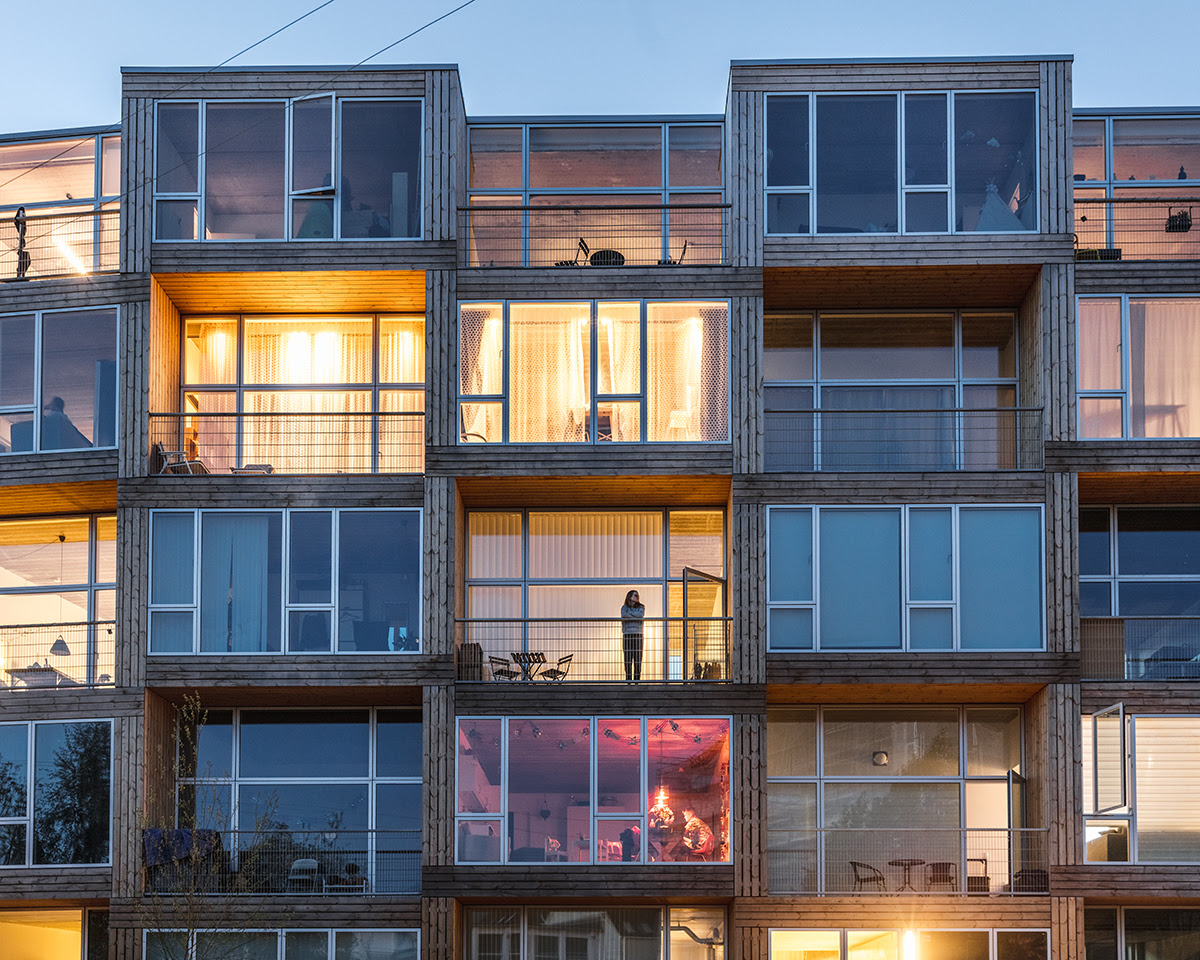Architects: Want to have your project featured? Showcase your work by uploading projects to Architizer and sign up for our inspirational newsletters.
The Smithsonian’s National Museum of African American History and Culture (NMAAHC) is situated on the last five acres of the National Mall in Washington, D.C., once the epicenter of the nation’s slave trade, on a prominent site just across from the Washington Monument.
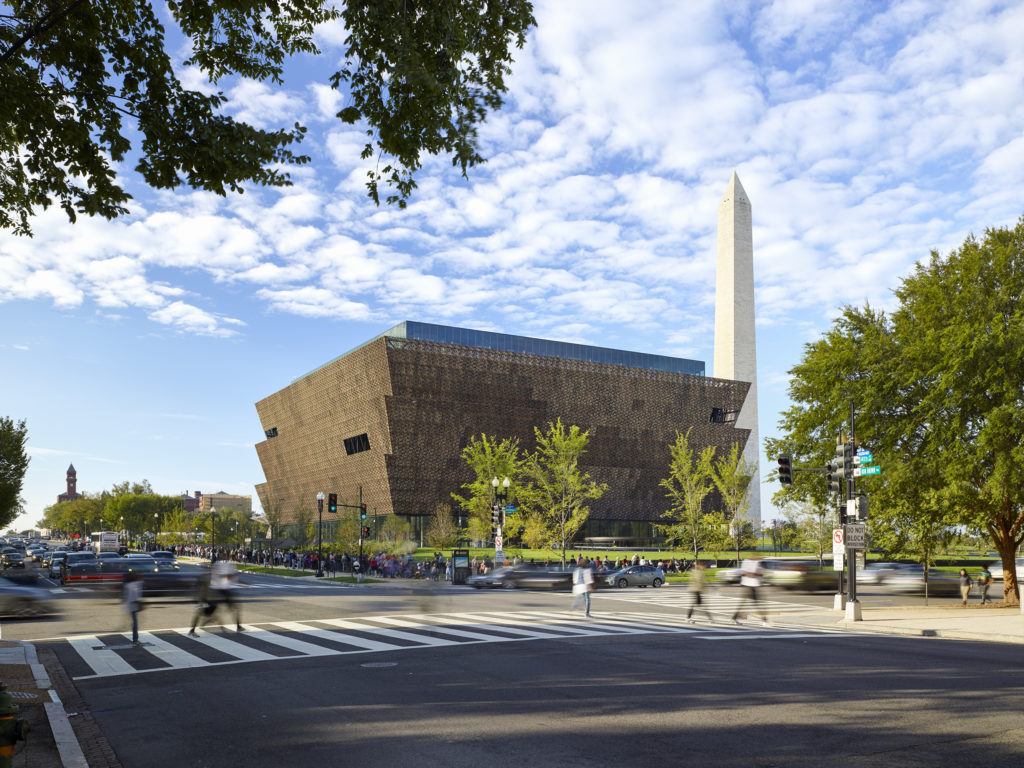
Photo via The Smithsonian Institution.
The museum was designed by Adjaye Associates, one of the world’s leading Black-owned architecture practices, in collaboration with The Freelon Group, Davis Brody Bond LLP and SmithGroupJJR. Their competition-winning proposal, which they dubbed Corona after an African word for crown, features an intricately detailed, bronze-colored façade that is steeped in references to the struggles and achievements of African Americans.
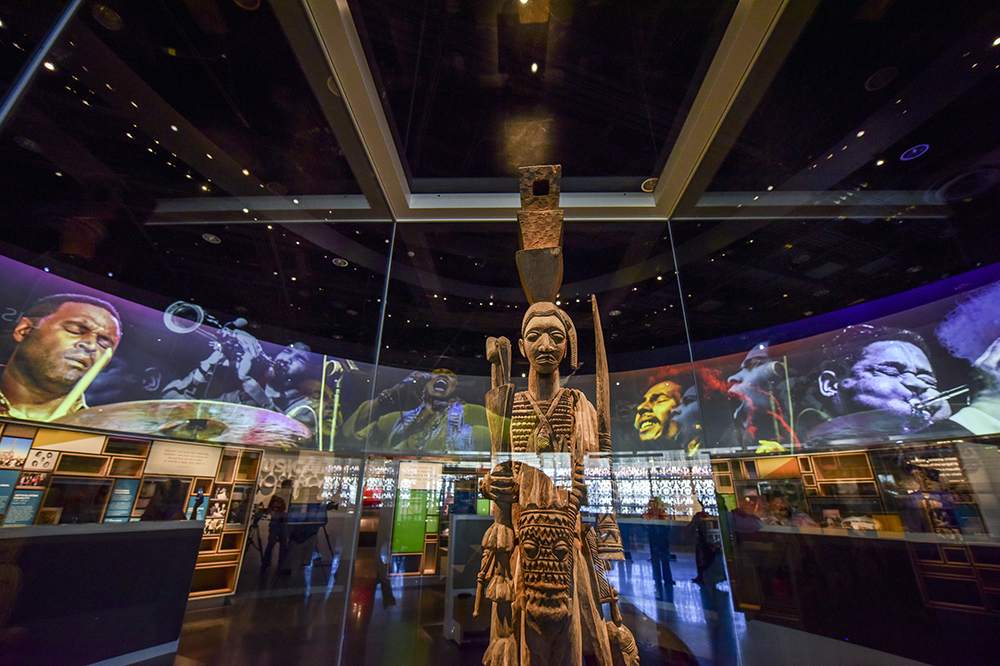
Photo by Jahi Chikwendiu; via The Washington Post.
The inspiration for the tiered exterior came from one of the sculptures in the museum’s collection, a 7-foot-tall depiction of a crowned figure that was carved by late African artist Olowe of Ise. “It is a building with many narratives — relating to the context, the history and the program,” David Adjaye, founder of Adjaye Associates, told Architizer. “This narrative is articulated immediately by the silhouette — borrowing from the form of a Yoruba sculpture — while also resonating with the angle of the Washington Monument.”
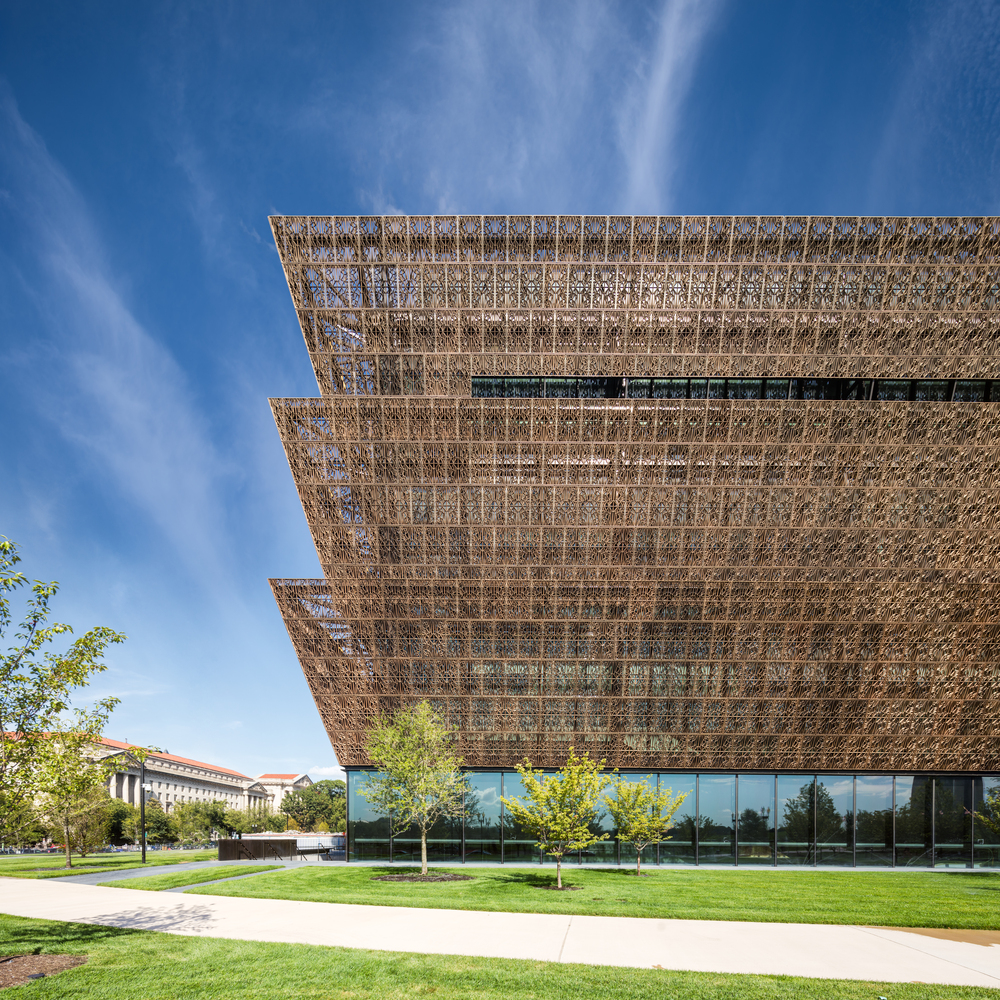
Photo by Darren Bradley.
Each tier of the façade consists of approximately 1,200 ornate cast aluminum panels, which were custom designed and fabricated for the project by Enclos and Element. The panels measure 4-feet-wide by 5-feet-tall, and weigh upwards of 135 pounds apiece. They are supported by architecturally exposed structural steel (AESS) frames, also supplied by Element, which are suspended from the façade by steel outriggers.
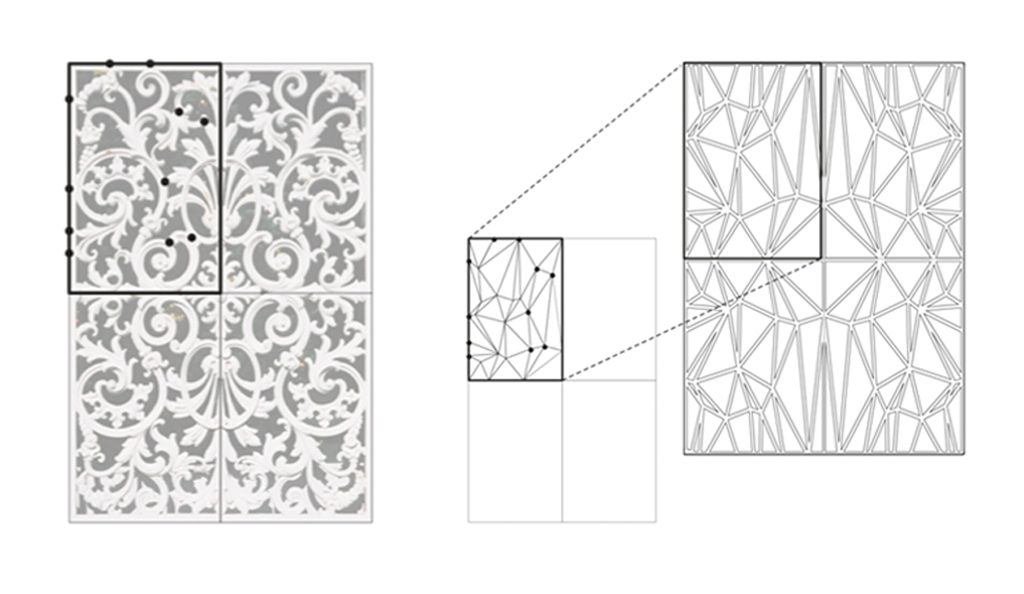
Image by Freelon Adjaye Bond / SmithGroup.
The panels themselves were designed to evoke the decorative ironwork found throughout southern architecture, which was often forged by African American slaves and unrecognized freedmen. The architects studied iron railings and façade ornaments from South Carolina to New Orleans before selecting a historic grille as the basis of their design. They then used digital modeling software to abstract the pattern, giving it a contemporary flare.
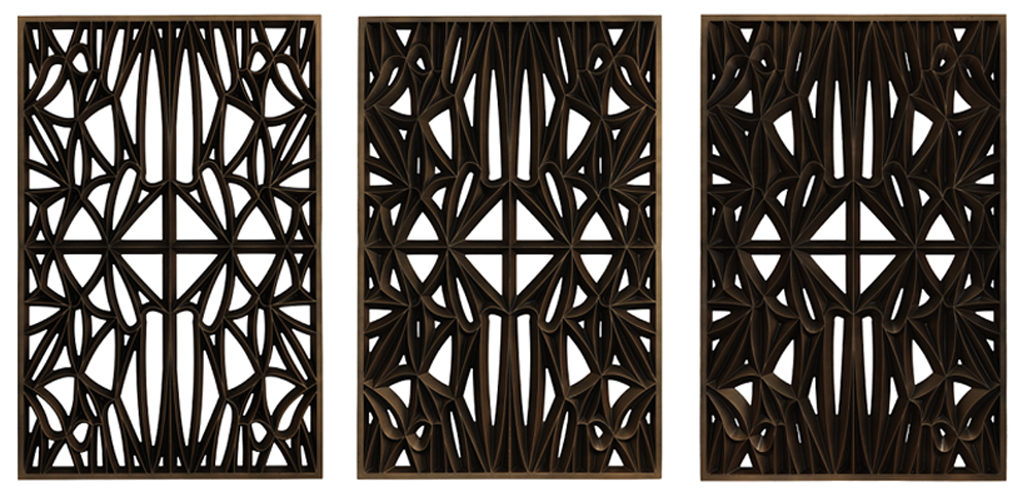
Photos by The National Museum of African American History and Culture.
There are four panels modules in total, whose opacities vary between 65% and 90% depending on their orientation. The architects used a combination of algorithmically-controlled energy analysis software and full-scale mock ups on site to determine the best location for each module. This allows public spaces enjoy an abundance of natural light while ensuring that the exhibition spaces are protected from direct sunlight and glare.
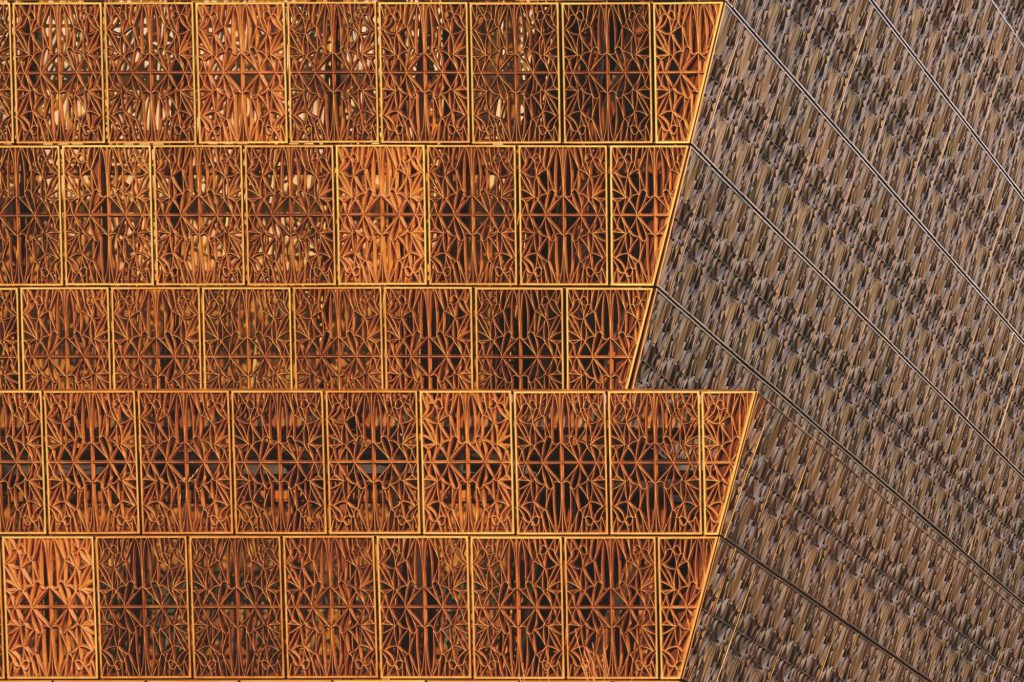
Photo by Alan Karchmer; via Newsdesk.
Although the original design had called for real bronze panels, they proved too expensive and required too much maintenance. Instead, the design team collaborated with Valspar over an 18-month period to develop a simulated bronze coating suitable for cast aluminum. The final color is a mixture of their standard Black Fluropon metal coating and three artisanal shades — African Sunset, African Sunrise and African Rose — created specifically for the museum.
The coatings were applied by hand to create natural variations and then finished with a pigmented clear coat for added depth. “The idea was to express African American culture in a different way than stone could and provide a range of bronze color depending upon the time of day, weather and exposure of each façade seasonally,” project architect Hal Davis said in an interview with Metal Architecture.
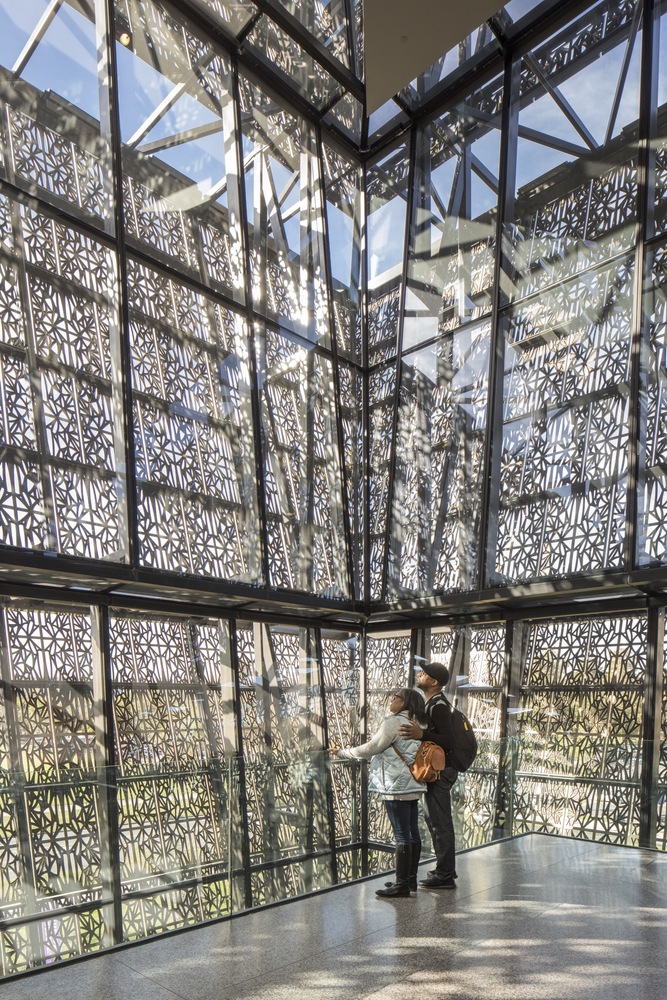
Photo by Brad Feinknopf.
On the interior, terrazzo floors trimmed in bronze and speckled with African marble echo the façade’s historic and cultural references. These expansive, column-free surfaces become a canvas for the bronze filagree, which renders the passage of time with a complicated play of light and shadow while, at the same time, framing panoramas of the Memorial Grounds.
Architects: Want to have your project featured? Showcase your work by uploading projects to Architizer and sign up for our inspirational newsletters.
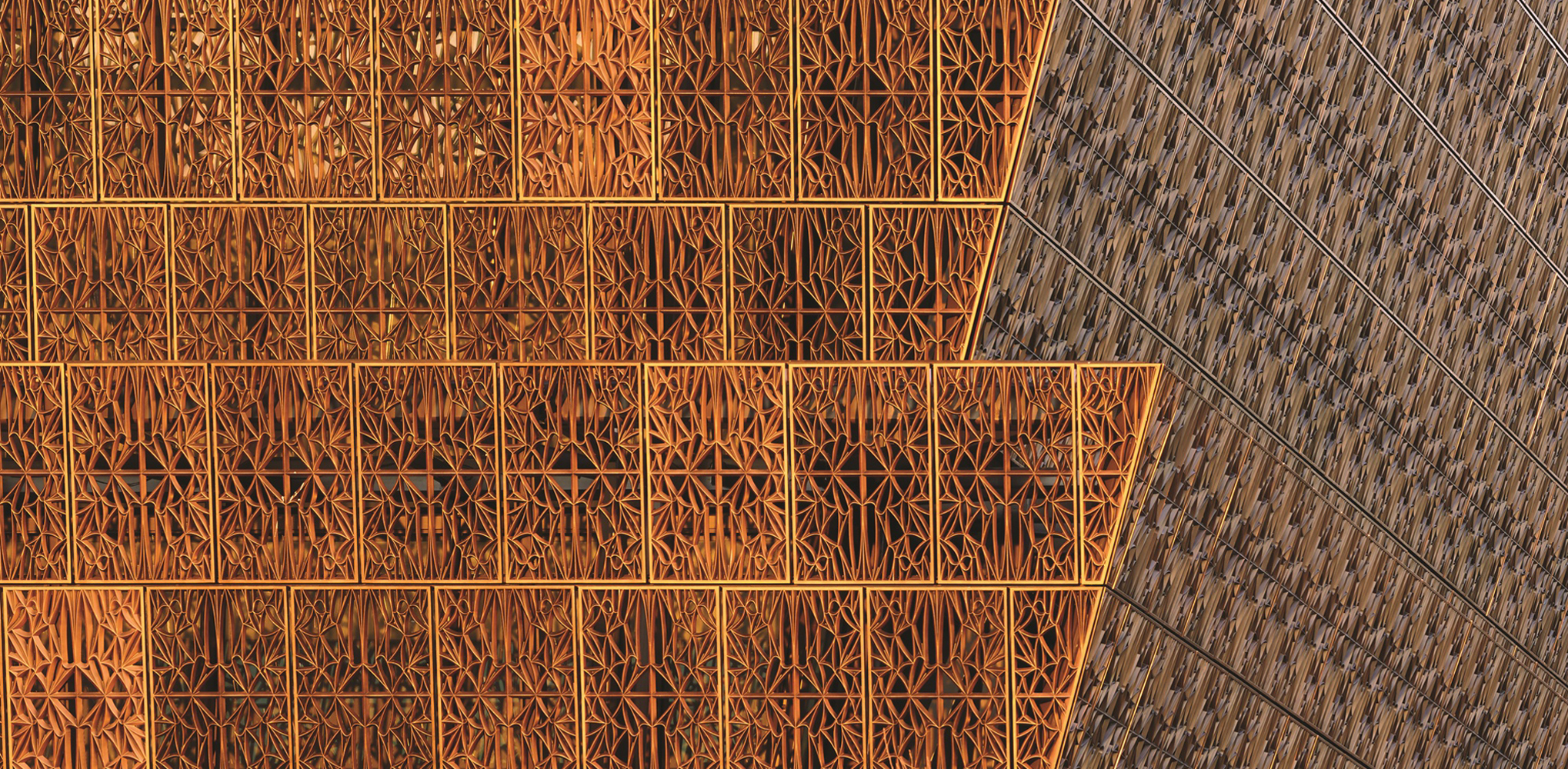
 National Museum of African American History and Culture
National Museum of African American History and Culture 